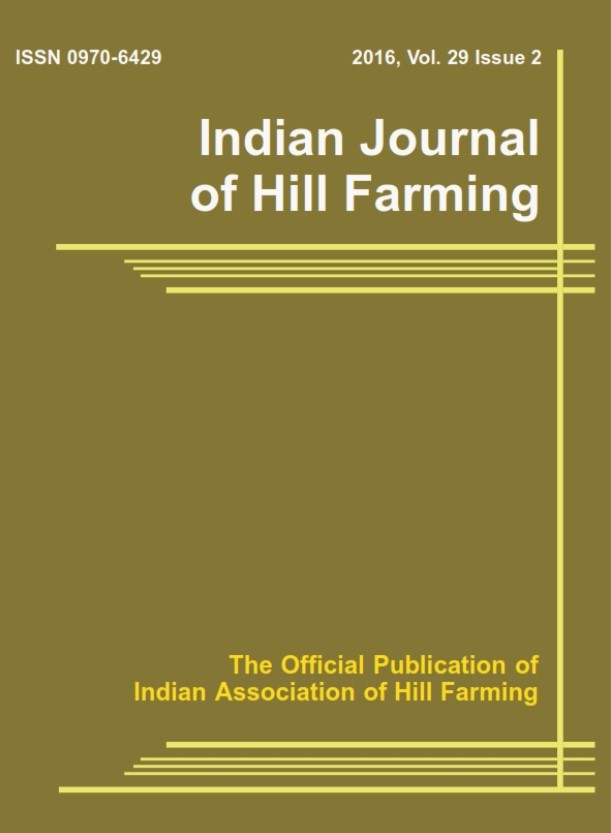Integrated effect of phosphate solubilizing microorganisms and FYM levels on soil fertility, yield and nutrient uptake of soybean
DOI:
https://doi.org/10.56678/Keywords:
: Phosphorus, PSM, FYM, phosphate solubilization, yield, soil propertiesAbstract
Phosphorus (P) limitation in soil, due to P fixation by absorption or precipitation or by both, is a major constraint for agricultural productivity. Application of phosphate solubilizing microorganisms (PSM) along with organic manures can be one of the simple and cost effective approaches to address the above problem in an eco-friendly manner. With this background, an experiment was conducted under control conditions (pots) to study the effect of four PSM strains viz, Bacillus polymyxa, Pseudomonas striata, Aspergillus awamori and Penicillium digitatum on some selected soil properties, crop yield and nutrient uptake under three levels of FYM of 0, 5, 10 t ha-1 . Seed inoculation of Bradyrhizobium japonicum was common for all the treatments. Result of the study revealed that PSM seed inoculation with increasing levels of FYM stimulate the phosphate solubilizing bacterial and fungal population, which lead to slight decreased in rhizosphere soil pH and CaCO3 and slight increase in EC. The efficacy of PSM for improving available Nitrogen, Phosphorus and other soil properties was observed in the order of Aspergillus awamori > Bacillus polymyxa > Penicillium digitatum > Pseudomonas striata with higher levels of FYM. The synergistic effect of Aspergillus awamori and Bacillus polymyxa with Bradyrhizobium were most effective among the PSM strains, reflecting highest number of effective root nodules and PSM population. The highest soybean yield and nutrient uptake was observed in Aspergillus awamori seed inoculation treatment with 10 t ha-1 FYM, followed by Bacillus polymyxa seed inoculation treatment. It can therefore be inferred that Aspergillus awamori and Bacillus polymyxa are the most efficient PSM strain with higher levels of FYM for obtaining higher soybean yield, improving soil N and P fertility and other soil properties.Downloads
Published
2023-03-31
Issue
Section
Articles
License
Copyright (c) 2023 Loitongbam Joymati Chanu, P.P. Kadu, T. Basanta Singh (Author)

This work is licensed under a Creative Commons Attribution-NonCommercial-NoDerivatives 4.0 International License.
How to Cite
Integrated effect of phosphate solubilizing microorganisms and FYM levels on soil fertility, yield
and nutrient uptake of soybean. (2023). Indian Journal of Hill Farming, 36(01), 185-195. https://doi.org/10.56678/




